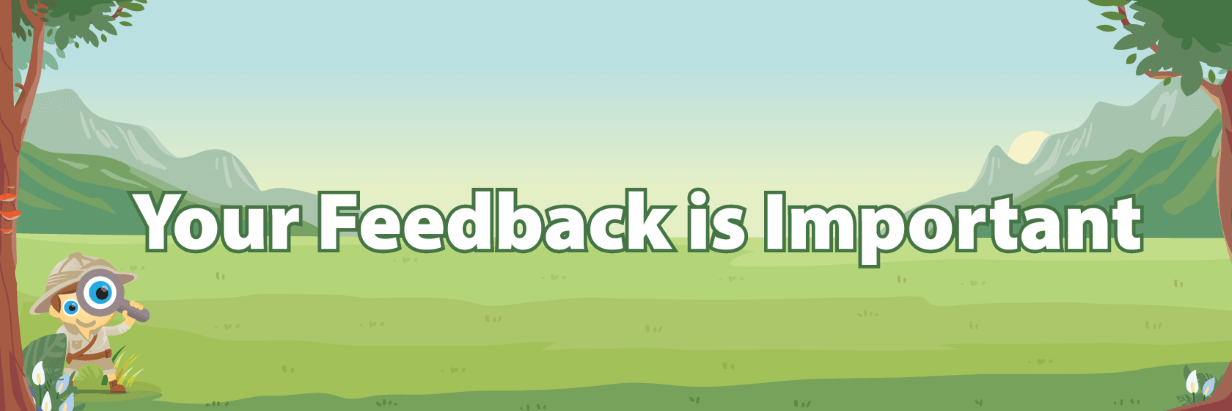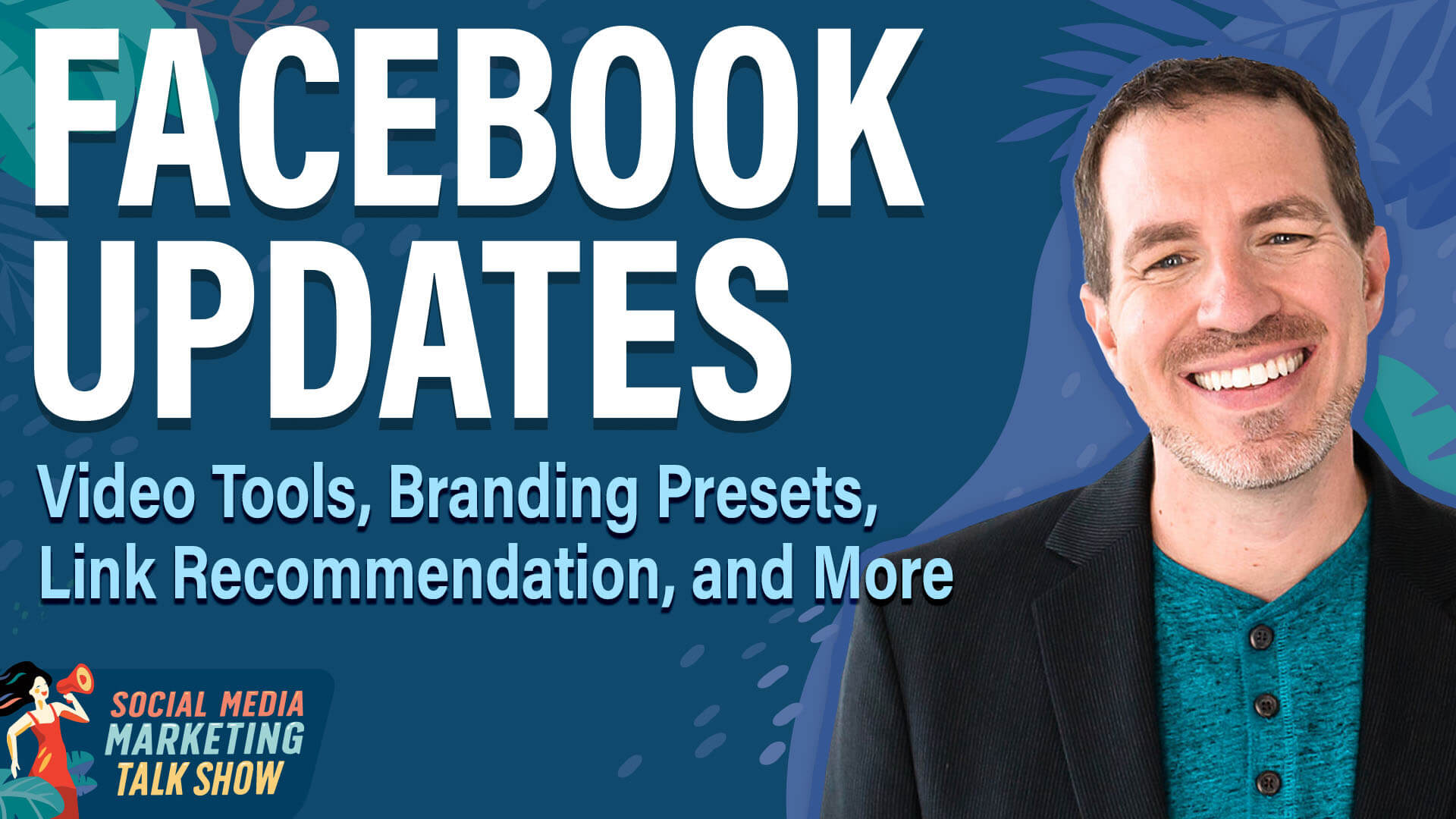Today's Guide to the Marketing Jungle from Social Media Examiner...
presented by 
The weekend is almost here, Alluser! Here's a recap of the most important insights, trends, and updates from the week. Catch up in minutes and go into next week prepared.
In today's edition:
-
Try this content strategy to boost your brand on Instagram
-
Organic strategies to get more Instagram followers
-
Is ignoring this LinkedIn feature hurting your business?
-
The 4-stage Identity Marketing strategy
-
How to find the best AI tools for your multi-model workflows + a use case
-
Facebook Updates: Video Tools, Branding Presets, Link Recommendations, and More
-
Do you know about AI's easy button?
-
Identity-First prompting for ChatGPT
-
🗞️ Industry news from Instagram, Google, YouTube, and more

How Reposting Can Boost Your Brand, Rather Than Dilute It
What if reposting user-generated content (UGC) could save you time, fuel authenticity, and build real community—without compromising your unique voice or visual aesthetic?
Neal Schaffer says smart brands strategically weave UGC into their feeds and shows you how to do it right, from getting crystal-clear permission to preserving your brand's tone and look.
You'll also learn the ratio of original to reposted content and how to tap into Instagram's tools to amplify others' work while keeping your brand front and center. Read more here.
SEO Tips and Strategies to Get In Front of Your Ideal Audience on Instagram
Do you need to grow your brand's Instagram following? Having trouble breaking through in the feed?
This week, Brock Johnson shares up-to-date SEO strategies tailored to marketers like you.
You'll get smart, practical moves that help your content reach your ideal audience, today so you see real growth in 30 days. Watch more here.
The LinkedIn Feature 90% of Company Pages Are Missing
Most businesses obsess over their LinkedIn content strategy but completely overlook one of the platform's most powerful real estate opportunities.
While you're busy crafting the perfect post, your competitors might already be leveraging this hidden gem to control exactly what visitors see first when they land on their company page.
Here's the thing: your regular posts get buried quickly in LinkedIn's algorithm, but Michelle J. Raymond has a way to keep your most important content front and center, where it can't be missed.
The setup takes less than five minutes, but the strategic thinking behind what you choose to showcase is what matters. Watch more here.

Will You Help Shape Our Content?
Alluser, as a newsletter subscriber, you've been with us through major marketing shifts. As we dive deeper into AI, we want to make sure we cover what matters most to you.
Please help by taking our Generative AI Survey. It will directly influence:
-
Which AI topics we feature in upcoming newsletters
-
What skill levels our articles target
-
Which tools and strategies we prioritize
Thanks for helping us create the AI content that serves you best.
But don't wait. The survey closes tomorrow!
Yes. I'm ready to share my feedback.

The Power of Identity: Building Lifelong Customers
While most marketers focus on optimizing their brand identity—controlling how their company appears to the world—a revolutionary approach is emerging that flips this concept entirely. Instead of perfecting your brand's presentation, identity marketing focuses on understanding and connecting with your customers' evolving sense of self.
The real issue isn't that brands need to rebrand themselves, but that consumers have fundamentally changed who they are as people, explains Veronica Romney, author of Identity Marketing. This insight becomes particularly crucial when considering how dramatically people's identities have shifted in recent years due to economic uncertainty, global events, and changing life circumstances.
Traditional marketing approaches miss these fundamental shifts entirely, yet this transformation represents the kind of deep identity change that smart marketers can recognize and leverage.
When brands successfully connect with their customers' identity, they transcend the typical transactional relationship and create something far more powerful.
First, you're no longer competing solely on price or features because customers are emotionally invested in what your brand represents about their identity. Second, these customers become natural evangelists, speaking on your behalf in every corner of the room you're not part of. Third, you can leverage authentic word-of-mouth marketing instead of constantly feeding the expensive advertising machine that never seems satisfied.
Identity marketing also provides a significant advantage for underdog brands. Romney's book contains numerous examples of small businesses that disrupted wildly saturated, uber-competitive markets simply by understanding and connecting with their consumers' identity in ways that larger competitors overlooked.
Step 1, Find It: How to Research Your Customer's Themes and Language Patterns
The first step in identity marketing requires a fundamental paradigm shift in how you research your customers. Most brands conduct online audits from an egocentric perspective, asking questions like "What do prospects think about us?" or "What are customers saying about our brand?" While this information has value, it misses the deeper psychological drivers that truly motivate purchasing decisions.
The Identity Lens Secret Shopper Analysis
This approach focuses entirely on what customers say about themselves—their self-concept, self-labeling, aspirations, and struggles. You're mining for voice of customer data that reveals how they perceive themselves and who they desire to become.
To achieve this, you have to know where to look and how to interpret what you find. Start by examining your digital ecosystem, including Instagram comments, YouTube comments, Facebook groups, customer survey responses, and your email inbox. The key is to block out what customers say about your brand and hyper-focus on what they say about themselves.
Look for positive, negative, or neutral language that reveals their self-perception. Are they struggling with being a "good mom" or "bad mom"? What do they say about who they are and wish to become? What challenges are they facing in their personal identity?
For businesses that lack existing customer data, Romney suggests examining other providers who target the same buyer. Since most companies aren't conducting identity marketing work, you can likely gather valuable insights from their customer interactions without competitive concerns.
Romney also acknowledges the potential of AI tools for this research, but offers an important warning. While AI can help analyze external resources, be extremely careful about having AI summarize or rephrase user sentiment and language. The power of identity marketing often lies in the raw, authentic language that customers use, which can be lost when filtered through AI summaries.
Sometimes, identity research reveals that you're not actually selling to who you think you are. For example, you might think you were selling to X, but you're really selling for Y. This distinction between selling to and selling for can be transformational for businesses.
In many cases, the purchaser buys on behalf of someone else—their family, team, future self, or aspirational identity. Understanding this dynamic allows you to craft messaging that speaks to the motivations driving the purchase decision, rather than surface-level benefits.
Case Study Example: TalkBox.Mom
Romney shares a powerful example from a workshop with TalkBoxMom, a self-funded company that teaches families to speak foreign languages. The team spent thirty minutes dividing and conquering the internet, with one person analyzing Reddit, another exploring Facebook groups, and others examining YouTube comments and other platforms. They were specifically looking for user sentiment words rather than feedback about the brand.
What emerged from this exercise was revealing. Even though mom made ninety-five percent of purchasing decisions, the research uncovered that she wasn't buying Spanish to learn it herself or pursue her own aspirational development. Instead, she was buying Spanish for her family to become fluent, enabling them to experience the outside world with more unity and connection.
This insight led to a crucial reframe. Instead of targeting individual TalkBox.Mom users, the company began speaking to fluency families—families that wish to become fluent together. The shift from individual aspiration to family identity completely transformed their marketing approach and messaging.
Other topics discussed include:
-
How to Validate Your Identity Marketing Hypothesis
-
How to Develop Your Identity-Based Slogans and Name
-
How to Bring Identity Marketing to Life in Campaigns
Today's advice is provided with insights from Veronica Romney, a featured guest on the Social Media Marketing Podcast.
Watch the full interview on YouTube
Combining AI Tools for Better Results
Most marketers begin their AI journey with ChatGPT.
However, Grace Leung, a digital growth consultant who helps marketers grow organically with AI strategies, says limiting yourself to a single AI tool means missing significant opportunities for enhanced performance and capabilities.
Rather than relying solely on benchmarks or general recommendations, you need a structured approach to testing and implementing multiple AI platforms. This framework ensures you make informed decisions rather than random experiments.
Establish Your AI Tool Testing Framework
Once you've identified your key use cases, design a standardized prompt that you can test across different models simultaneously. This approach provides the most objective comparison of each model's capabilities because you control the input variable while measuring different outputs.
During your testing phase, evaluate several critical factors for each model:
-
Speed represents how quickly each tool responds to your queries, which becomes crucial when you're working under tight deadlines or processing large amounts of information.
-
Accuracy involves checking for any bias or inaccurate information in the responses, particularly when dealing with factual content or industry-specific knowledge.
-
The tone and presentation style of each model's output also vary significantly and should be considered.
How to Test AI Tools for Bias and Accuracy
A practical method for evaluating model reliability involves asking factual questions about topics you know well. This technique allows you to spot potential biases or knowledge gaps across different platforms.
For example, if you work for a specific company or in a particular industry, ask each AI tool to provide a comprehensive overview of your brand, including product details, messaging, and market positioning. Compare these responses to identify which model provides the most accurate and complete information. This comparison reveals not only factual accuracy but also how each model approaches research and synthesis of information.
Use Case: How to Analyze Large Data Sets with Gemini and Claude
Large data sets in marketing contexts encompass various types of information that consume significant computational resources. These might include comprehensive reports spanning hundreds of pages, extensive collections of customer reviews, social media comments from multiple platforms, forum discussions, or business profile reviews across different locations.
The power of AI in this context lies in its ability to identify patterns within unstructured data and transform that information into structured, actionable formats. Instead of manually reading through hundreds of customer comments or reviews, AI can systematically analyze these data sets and extract meaningful themes, sentiments, and insights.
Stage One: Initial Processing with Gemini
Begin by uploading your large data set to Gemini 2.5 Pro, which is designed for data-heavy analysis tasks.
When working with Gemini for data analysis, request a comprehensive data summary rather than jumping directly to insights or recommendations. This summary should identify patterns, frequently used words or phrases, and a statistical overview of the information. Ask Gemini to perform statistical summary analysis as the foundation for deeper interpretation.
A practical example involves audience research for marketing campaigns. You might compile customer reviews, social media comments, and forum discussions about your product category, then upload this collection to Gemini with a request to identify common themes, pain points, and language patterns used by your target audience.
Stage Two: Strategic Analysis with Claude
After Gemini completes its initial analysis, take that output to Claude for refined strategic interpretation.
When transitioning from Gemini to Claude, include context in your Gemini prompt explaining that the output will be passed to another AI for deeper analysis. This instruction helps Gemini structure its response in a way that facilitates the handoff to Claude.
I'm preparing this content to be passed to another AI system (Claude) for a deeper strategic analysis. Please give me a clear, structured summary of the following information with labeled sections. Be concise and avoid speculation. Claude will use your summary to identify opportunities and build out a strategic roadmap. Here's the source material: [Paste transcript, user notes, article draft, or other data here]
Claude's strength lies in transforming data summaries into strategic recommendations. Using the audience research example, you might ask Claude to generate a dashboard based on Gemini's analysis, develop two to three detailed persona profiles, identify specific pain points and motivations, and recommend messaging strategies that resonate with these target personas.
The workflow might progress from data analysis to persona development to messaging recommendations, with Claude building upon Gemini's foundational analysis to create comprehensive strategic guidance. For instance, if you're launching a new SaaS email marketing product, Claude can use the analyzed data to recommend specific messaging approaches that address the most significant pain points identified in your research.
Other topics discussed include:
-
How to Map Your Workflow to Multiple AI Tools
-
How to Do Quick Research with Perplexity
-
How to Do Deep Research with Gemini
-
How to Do Internal Research with NotebookLM and Perplexity
-
How to Use NotebookLM for SEO Research
-
Implementation Tips for Multi-Tool AI Workflows
Today's advice provided with insights from Grace Leung, a featured guest on the AI Explored podcast.
Watch the full interview YouTube
On this week's Social Media Marketing Talk Show, host Jerry Potter breaks down the latest Facebook news and what it means for marketers like you.
All Facebook Video Becomes Reels
Facebook has implemented a major change by converting all video content into its Reels format, creating a unified upload flow to eliminate the confusion around choosing between regular video posts and Reels.
The change addresses a longstanding user experience problem. When Reels first launched on Facebook, finding the upload interface was challenging for users on both mobile and desktop platforms. The new system streamlines this process by directing all video content to the same destination, regardless of format specifications.
Under this new system, Facebook supports all video lengths and orientations without restrictions. The platform can accommodate extremely long content—potentially up to four hours in length—meaning you could theoretically upload a four-hour Reel if that represents the current maximum video limit.
The format flexibility extends to orientation as well. Whether you upload landscape or portrait videos, everything flows through the same upload process. However, landscape videos will be cropped to fit the feed format when they appear in the feed. Users maintain the ability to rotate their phones sideways to view landscape content in its proper orientation.
Under this new system, privacy and audience settings from traditional feed posts apply directly to Reels, so uploading a video doesn't automatically make it public or push it to wider audiences. The platform includes prompts to confirm privacy settings when necessary, ensuring you maintain control over your content distribution.
The video tab on Facebook pages has been rebranded as the Reels tab, completing the transition. Over the past few weeks, the change has been gradually rolling out worldwide to both personal profiles and business pages.
This unified approach creates both opportunities and considerations for marketers. While Instagram announced a similar change previously, they specified that shorter videos under their length limits would receive increased reach and exposure to new audiences who weren't already following the account. Facebook has made no official announcement about similar reach preferences, creating an important testing opportunity for marketers. Facebook's approach to video length and reach may differ from Instagram's, making it crucial for marketers to test different video lengths and monitor their performance under the new system.
Meta's AI-Powered Video Editing Tool
Meta has introduced an AI-powered video editing tool that's currently being rolled out in the United States and more than a dozen other countries.
The tool operates in three different environments. First, you can access it directly through the Meta AI app. Second, it's available on the web through the Meta AI platform. Third, the functionality is integrated into the Edits Mobile app, which Instagram uses for video editing purposes.
The system offers over fifty AI styles that can be applied to ten-second video clips, requiring no editing skills from users. These automated transformations include effects like comic book styling, soft focus dreamy filters, and fluorescent video game aesthetics.
Meta is currently offering this tool for free, but they've specified this is for a limited time only. This pricing strategy follows a pattern across the industry: companies introduce advanced AI features at no cost to encourage adoption and gauge user value, then transition to paid models once the processing costs and user demand are better understood.
The editing process integrates seamlessly with Meta's publishing workflow. Once you've applied AI effects to your video clip, you can share the content directly to Facebook, Instagram, or the Discover feed without leaving the application. This streamlined approach removes multiple steps from the traditional editing-to-publishing process.
For marketers, the tool represents an opportunity to become pattern disruptors in their content approach. By being among the first brands to use these distinctive visual styles, you can stand out in feeds where audiences have become accustomed to seeing similar content formats repeatedly.
Consider the lifecycle of popular social media effects and memes—they often become oversaturated within days or weeks. Being an early adopter of these AI visual styles could position your brand as a trendsetter before the effects become commonplace.
The tool shows particular promise for businesses with visual products or behind-the-scenes content. If you operate a bakery, craft business, or any enterprise where you regularly capture short clips of your work process, this tool could automatically transform basic footage into engaging content. Similarly, product demonstration videos or simple product showcases could benefit from these AI-enhanced visual treatments.
Even basic smartphone footage of products or services—material that might otherwise sit unused on your device until storage space becomes an issue—could be quickly transformed into polished, shareable content through this AI processing system.
Branding Presets for Ads
Meta has introduced branding presets within Meta Ads Manager, providing marketers with a centralized system for maintaining brand consistency across advertising campaigns. This feature addresses the common challenge of ensuring visual and messaging consistency, particularly in organizations where multiple team members manage advertising efforts.
The branding presets system allows you to save and reuse key brand elements, including logos, color schemes, fonts, and even tone of voice guidelines. Once configured, these presets can be applied to ad creative during the campaign setup process, ensuring consistent brand presentation across all advertising efforts.
This functionality mirrors capabilities that have become standard in design tools like Canva, but integrating it directly into Meta's advertising platform eliminates the need to transfer brand guidelines between different tools and systems manually.
The system offers intelligent suggestions based on your existing advertising history and connected assets. Meta can analyze past advertisements, website URLs, Facebook pages, and connected Shopify accounts to suggest appropriate branding elements. This means you don't necessarily need to manually input specific hex codes for brand colors or upload every brand asset individually.
The presets become accessible during the ad setup process, allowing team members to maintain brand consistency even if they don't have detailed knowledge of specific brand guidelines. This is particularly valuable for businesses where advertising responsibilities are distributed among multiple team members or departments.
Beyond ensuring consistency, the system also speeds up the ad creation process by eliminating the need to locate and apply brand elements for each new campaign. This efficiency gain becomes more significant as advertising volume increases or when running multiple campaigns simultaneously.
The feature represents Meta's recognition that maintaining brand consistency across advertising campaigns has become a significant operational challenge for many businesses, particularly those scaling their advertising efforts or working with multiple team members on advertising creation.
More Features, Tools, Changes, and Updates Discussed Include:
-
Copyright-Checking Tool Updates
-
Unoriginal Content Reach and Monetization
-
AI Video Generation 2.0 and Video Highlights
-
External Link Placement Recommendations
-
Music for Text-Based Posts
-
Facebook Passkeys
Watch it on YouTube
Get to Know This 1 Under-the-Radar AI Feature
Have you ever given ChatGPT, Claude, or Gemini a prompt, then watched as the output appears and thought to yourself, "Dang it. I should have written that prompt differently."
Nicole Leffer reminds us of one of the simplest ways to dramatically improve AI's output—and it doesn't involve endlessly chatting in circles.
This quick fix will refine the original input based on what the model gave you, not what you wish it had said. It's the kind of foundational habit that pays off every time, no matter which tool you're using. Read more here.
Why Your ChatGPT Prompts Fall Flat—and the Simple Shift That Changes Everything
Still getting robotic, boring replies from ChatGPT—even after being detailed, polite, and ultra-specific? The problem isn't what you're asking—it's who you're asking ChatGPT to be.
This short video featuring Dan Sanchez introduces the Identity-First Method, a surprisingly simple tweak that can take your prompts from generic to expert-level in seconds. Instead of treating ChatGPT like a search engine, the creator shows how to cast it in a role like a seasoned marketing strategist or social media expert—and then watch it deliver nuanced, high-quality responses that feel like human insight, not machine output.
Whether you're drafting marketing plans, video hooks, or social content, this video will help you unlock the kind of output that saves time and boosts your confidence with AI. And with two advanced (but easy-to-apply) tips for improving prompt clarity, you'll finally feel in control of the process.
Ready to level up your prompts and get ChatGPT working with you, not just for you? Watch more here.

Instagram Expands DM Translations and Message Scheduling: More Instagram users have access to two messaging features designed to enhance communication across borders and busy schedules. Users can now translate messages into 99 languages by holding down a message and selecting Translate, making international conversations more accessible. Additionally, users can schedule text messages in DMs by long-pressing the send button and choosing a specific time, based on their device's time zone. Instagram for Business via Instagram
Photo-Sharing in Threads DMs: Threads has added support for sharing photos via direct messages, making it easier for photographers and creators to exchange images directly within the platform. The feature respects privacy boundaries, allowing media sharing only between users who mutually follow each other on Threads or Instagram. Threads
Instagram Tests Carousel Frame Like Insights: Instagram is testing a new analytics feature for professional accounts that reveals which specific frame in a carousel post was being viewed when users tapped Like. Found under the When people liked your carousel section, this tool gives creators deeper insights into content performance across multi-slide posts. The feature is currently in limited testing and may not yet be available to all users. Adina Jipa
Threads Adds Enhanced Insights for Content Performance and Discovery: Threads has introduced new metrics in its "Insights" dashboard to help creators better track engagement and understand how content is discovered. Users can now view post interactions by type, analyze follower growth with demographic and geographic data, and explore trends over time through a new 7–90 day chart. Additionally, creators can see how much traffic their posts receive from Threads, Instagram, and Facebook. TechCrunch
X Restricts Emoji Use in Ads: X has updated its Ad Quality Policy with a new rule that penalizes ads with more than one emoji—lowering quality scores and increasing costs—unless the ads exclusively target Japan or Korea. This change may impact current campaigns that need urgent adjustments to comply with the updated guidelines. Social Media Today
YouTube Expands Dream Track Testing for Shorts Creators: YouTube is rolling out experimental updates to its Dream Track feature for Shorts, focusing on improved quality and expanded customization of AI-generated soundtracks. These enhancements are available to a limited group of creators in the U.S. as part of ongoing testing. YouTube
Instagram's Reach Unaffected by Link In Bio: Instagram chief Adam Mosseri has publicly refuted the persistent claim that including "link in bio" in post captions suppresses reach, stating the platform does not penalize such language. While some users have experienced reduced performance, Instagram attributes this to post-level engagement or viewer fatigue—not any algorithmic filtering. Engagement remains the key driver of visibility, while "link in bio" itself carries no intrinsic harm. For clickable CTAs, formats like Story Link Stickers, product tags, and DM-based prompts offer more effective alternatives. Social Media Today
Instagram Test an Auto‑Scroll for In-Feed Posts: Instagram is testing a new Auto‑Scroll toggle that automatically advances to the next post or Reel after the current one finishes, offering a seamless and passive browsing experience. The feature is in phased beta testing among select iOS and Android users. Lindsay Gamble via Threads
Google Analytics Integrates Reddit Ads with Lead-Gen Insights: Google Analytics has launched a tight integration with Reddit Ads, empowering marketers to import Reddit ad spend directly into GA and unlock detailed lead generation reports. This update enhances funnel-based analysis by enabling the creation of audience segments tied to different stages of the Reddit Ads conversion path. Search Engine Land
YouTube Shorts Unveils AI Tools to Animate Photos and Doodles: YouTube has launched new generative AI capabilities for Shorts, allowing creators to transform static images into dynamic, approximately six‑second videos via its new Photo‑to‑video tool powered by Veo 2. Alongside this, a suite of AI effects let's users animate selfies and doodles with themes such as underwater exploration or playful twinning. The platform has also introduced an AI Playground—a dedicated space offering prompts, examples, and tools for creators to experiment with AI‑generated video, imagery, and music. All AI creations are clearly marked with SynthID watermarks, maintaining transparency. Additionally, Veo 3—the next generation of Google's video AI—will be available later this summer to further expand Shorts' creative potential. YouTube Blog
YouTube Tests Mobile Comment Threading: YouTube is rolling out a temporary comment threading feature on iOS and Android, active until August 14, aimed at enhancing mobile conversation clarity. Users can tap the X replies button under a comment to open a dedicated Replies panel, helping to streamline discussions and improve readability. YouTube
What Did You Think of Today's Newsletter?
Did You Know?
Left-opening spiral sea shells are extremely rare: About 90% of spiral shells open to the right, making left-opening spiral sea shells a rare find that shell collectors cherish.

Michael Stelzner, Founder and CEO
P.S. Add
michael@socialmediaexaminer.com into your contacts list. Use Gmail?
Go here to add us as a contact.
We publish updates with links for our new posts and content from partners. Your information: Email:
tukangpostoemel@gmail.com Opted in on: 2021-09-06 17:20:47 UTC.










